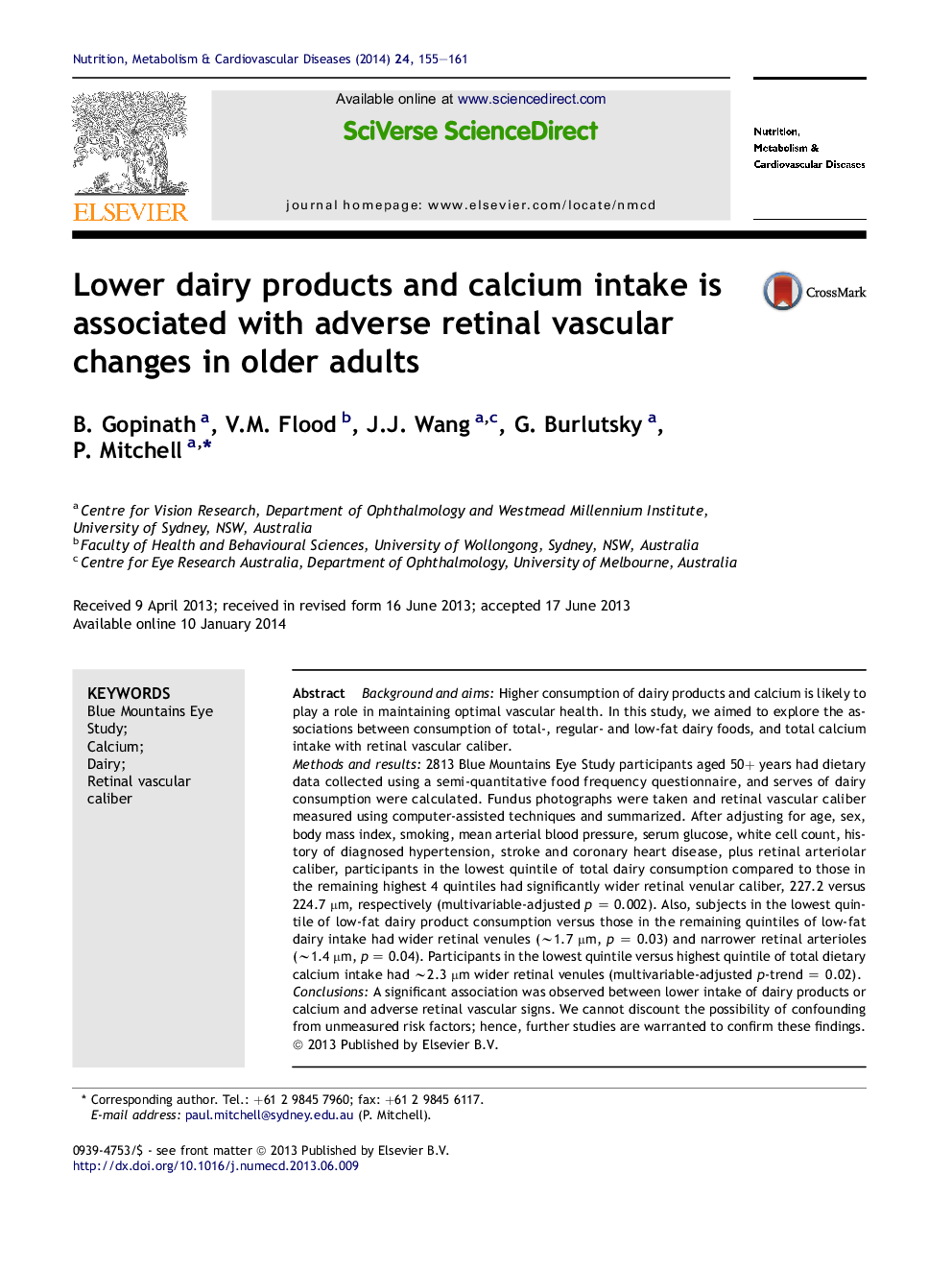| Article ID | Journal | Published Year | Pages | File Type |
|---|---|---|---|---|
| 3002134 | Nutrition, Metabolism and Cardiovascular Diseases | 2014 | 7 Pages |
Background and aimsHigher consumption of dairy products and calcium is likely to play a role in maintaining optimal vascular health. In this study, we aimed to explore the associations between consumption of total-, regular- and low-fat dairy foods, and total calcium intake with retinal vascular caliber.Methods and results2813 Blue Mountains Eye Study participants aged 50+ years had dietary data collected using a semi-quantitative food frequency questionnaire, and serves of dairy consumption were calculated. Fundus photographs were taken and retinal vascular caliber measured using computer-assisted techniques and summarized. After adjusting for age, sex, body mass index, smoking, mean arterial blood pressure, serum glucose, white cell count, history of diagnosed hypertension, stroke and coronary heart disease, plus retinal arteriolar caliber, participants in the lowest quintile of total dairy consumption compared to those in the remaining highest 4 quintiles had significantly wider retinal venular caliber, 227.2 versus 224.7 μm, respectively (multivariable-adjusted p = 0.002). Also, subjects in the lowest quintile of low-fat dairy product consumption versus those in the remaining quintiles of low-fat dairy intake had wider retinal venules (∼1.7 μm, p = 0.03) and narrower retinal arterioles (∼1.4 μm, p = 0.04). Participants in the lowest quintile versus highest quintile of total dietary calcium intake had ∼2.3 μm wider retinal venules (multivariable-adjusted p-trend = 0.02).ConclusionsA significant association was observed between lower intake of dairy products or calcium and adverse retinal vascular signs. We cannot discount the possibility of confounding from unmeasured risk factors; hence, further studies are warranted to confirm these findings.
